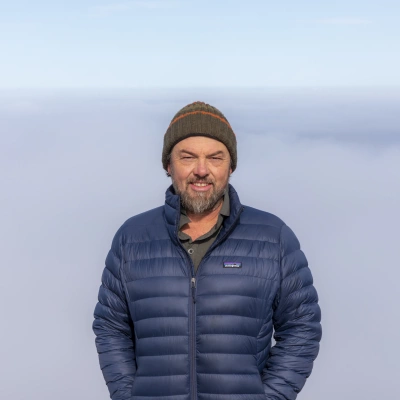takayna / Tarkine
Takayna / Tarkine is a hugely diverse wild landscape with an extraordinary history. Largely unprotected this region has huge potential for national park and world heritage status. With vast areas of rainforest, stunning waterways, unique geology, a fascinating human history and varied wildlife, takayna is a global treasure.
Rainforest and old eucalyptus species are a feature of the region
A giant myrtle beech tree - Nothofagus cunnighamii - stand proudly in the forest
Dicksonia antarctica - the tree fern - accompanies the myrtle beech and other rainforest species in the Tarkine forests
The rainforests of the Tarkine have incredible fungi
The blue tape in this photo indicates a forestry operation - this ancient forest was subsequently logged
Activists from all over the world come to protect these remarkable forests from logging
The activists create blockades to try and halt the logging - this forest near the Frankland River was saved
The rivers of the Tarkine are bounded by these lush and ancient forests
Astacopsis gouldi live in the rivers of takayna - they are the worlds largest invertebrate
Moorlands and rocky hills seperate the forests from the coast
The Takayna coast is incredibly dramatic
Huge swells travel half way around the earth before striking the coast
The geology of the rocks on the coast are easily as dramatic as the other elements
Coastal lagoons provide great snorkelling
The dunes of the coast reveal the presence of over 40000 years of human habitation
Middens reveal the diet of the Aboriginal people of the area. Seal, wallaby and shell fish dominate
Hut depressions often accompany the middens - the larger huts housed up to 30 people
Kunikung or pigface provides food and medicine
Marsupial lawns provide luxuriant grazing for wombats and wallabies
Buttongrass is an iconic plant found across the plains of takayna
Tarkine coastal rock and vegetation
Conservationist, Bob Brown bird watching on the Tarkine coast

Dan Broun
Kuno Earth Media Centre Manager
Dan Broun is an experienced photo-journalist and passionate advocate for wild nature
Takayna / Tarkine is a hugely diverse wild landscape with an extraordinary history. Largely unprotected this region has huge potential for national park and world heritage status. With vast areas of rainforest, stunning waterways, unique geology, a fascinating human history and varied wildlife, takayna is a global treasure.
Rainforest and old eucalyptus species are a feature of the region
A giant myrtle beech tree - Nothofagus cunnighamii - stand proudly in the forest
Dicksonia antarctica - the tree fern - accompanies the myrtle beech and other rainforest species in the Tarkine forests
The rainforests of the Tarkine have incredible fungi
The blue tape in this photo indicates a forestry operation - this ancient forest was subsequently logged
Activists from all over the world come to protect these remarkable forests from logging
The activists create blockades to try and halt the logging - this forest near the Frankland River was saved
The rivers of the Tarkine are bounded by these lush and ancient forests
Astacopsis gouldi live in the rivers of takayna - they are the worlds largest invertebrate
Moorlands and rocky hills seperate the forests from the coast
The Takayna coast is incredibly dramatic
Huge swells travel half way around the earth before striking the coast
The geology of the rocks on the coast are easily as dramatic as the other elements
Coastal lagoons provide great snorkelling
The dunes of the coast reveal the presence of over 40000 years of human habitation
Middens reveal the diet of the Aboriginal people of the area. Seal, wallaby and shell fish dominate
Hut depressions often accompany the middens - the larger huts housed up to 30 people
Kunikung or pigface provides food and medicine
Marsupial lawns provide luxuriant grazing for wombats and wallabies
Buttongrass is an iconic plant found across the plains of takayna
Tarkine coastal rock and vegetation
Conservationist, Bob Brown bird watching on the Tarkine coast
You might like...

A kid running amok to action for nature
Experienced advocate for environmental and social change, Paul Oosting, reflects on how childhood experiences led him to a lifetime commitment to natu...
Read more

The open water migration of three rare parrots
It is unusual that there's only three species of parrot that migrate across open water in the world. They all migrate across Bass Strait, and they're ...
Read more

8 critical challenges for saving the Swift Parrot
Do we want to have a world with Swift Parrots, or don't we? If we do, we've got to act right now because we're running out of time fast. Here are 8 cr...
Read more

Ecology of the Forty-Spotted Pardalote
The 40-spotted Pardalote is a very specialised bird and one of the rarest on planet Earth. Expert Dr Andrew Hingston explains some of this beautiful e...
Read more
Newsletter
Sign up to keep in touch with articles, updates, events or news from Kuno, your platform for nature
